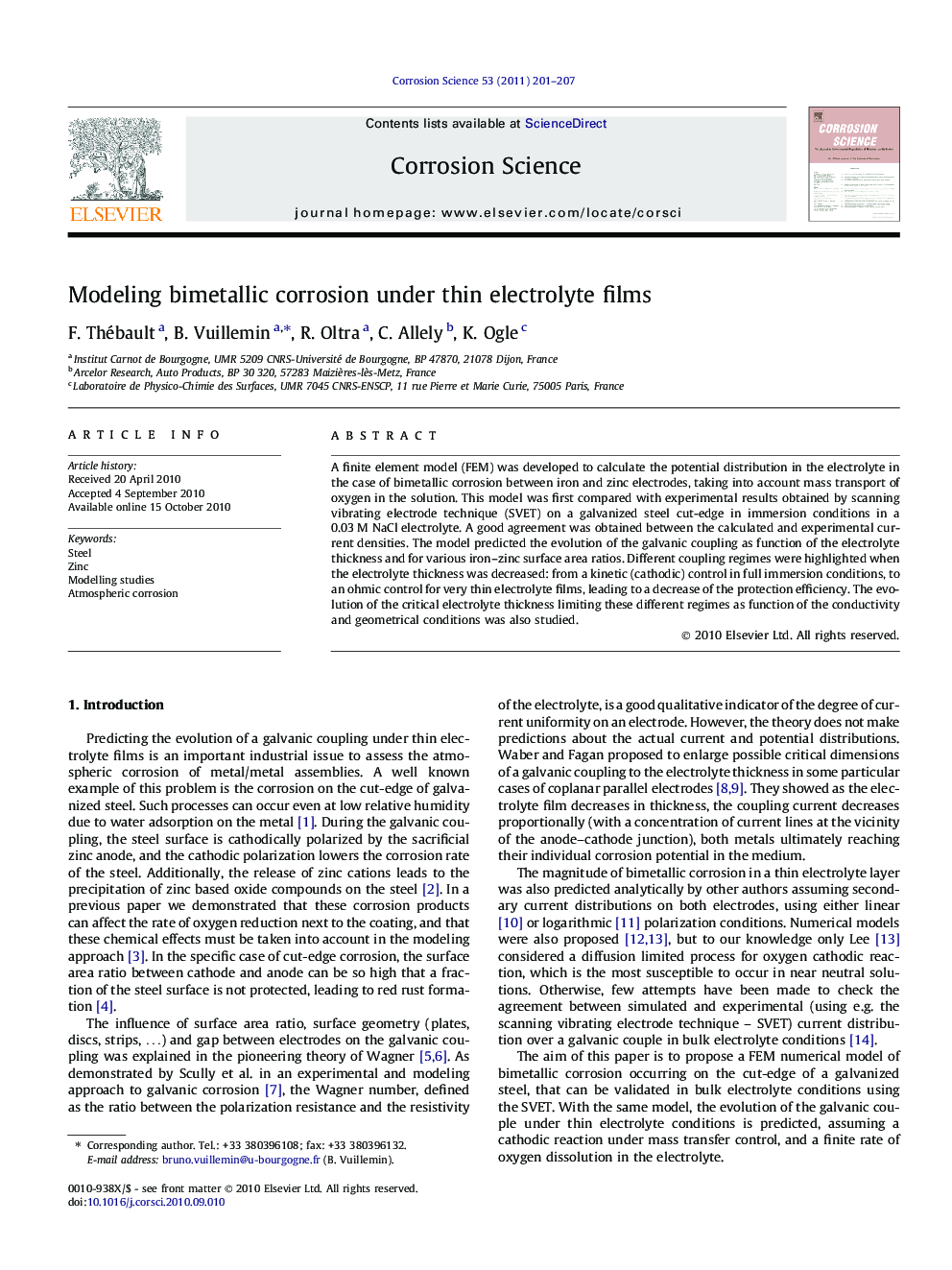| Article ID | Journal | Published Year | Pages | File Type |
|---|---|---|---|---|
| 1469827 | Corrosion Science | 2011 | 7 Pages |
A finite element model (FEM) was developed to calculate the potential distribution in the electrolyte in the case of bimetallic corrosion between iron and zinc electrodes, taking into account mass transport of oxygen in the solution. This model was first compared with experimental results obtained by scanning vibrating electrode technique (SVET) on a galvanized steel cut-edge in immersion conditions in a 0.03 M NaCl electrolyte. A good agreement was obtained between the calculated and experimental current densities. The model predicted the evolution of the galvanic coupling as function of the electrolyte thickness and for various iron–zinc surface area ratios. Different coupling regimes were highlighted when the electrolyte thickness was decreased: from a kinetic (cathodic) control in full immersion conditions, to an ohmic control for very thin electrolyte films, leading to a decrease of the protection efficiency. The evolution of the critical electrolyte thickness limiting these different regimes as function of the conductivity and geometrical conditions was also studied.
Research highlights► FEM model to calculate the potential distribution in the electrolyte in the case of bimetallic corrosion. ► Comparison with SVET experiments. ► Evolution of the coupling regime as function of the electrolyte thickness, conductivity, and electrode surface area ratio.
